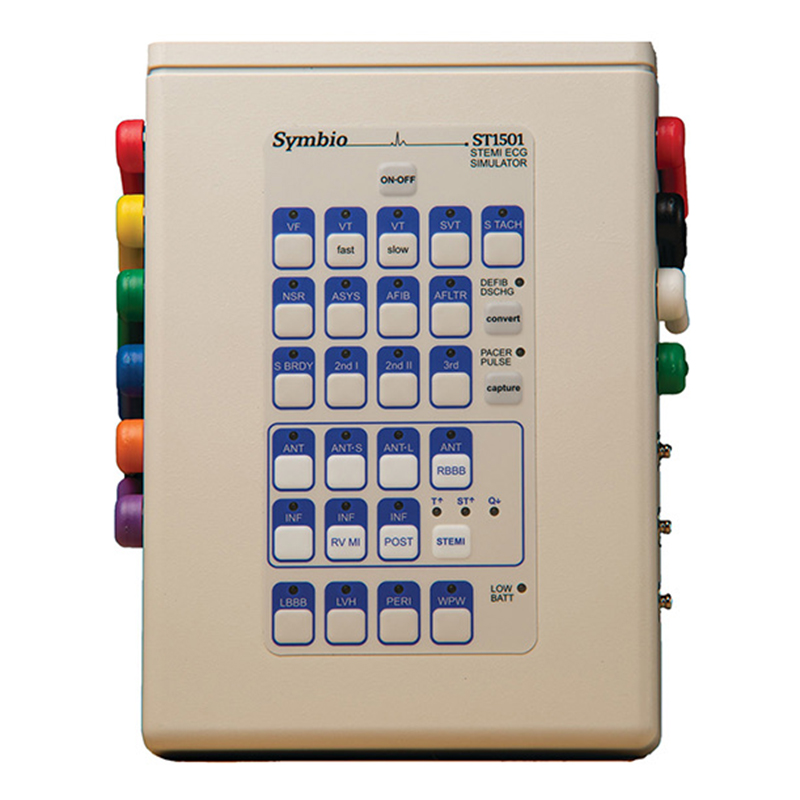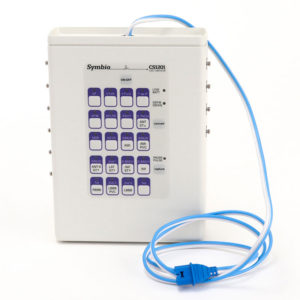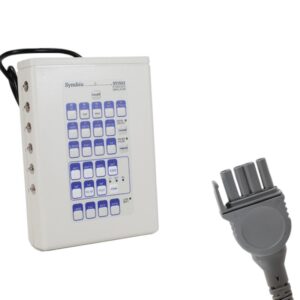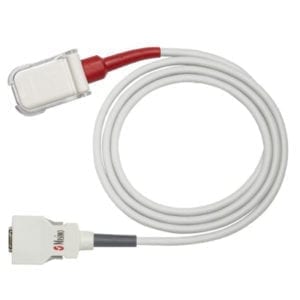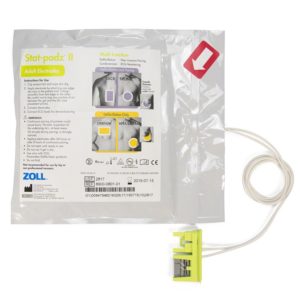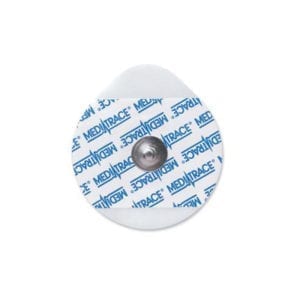Simulator, Symbio ST1501 12 Lead, STEMI,
From: $985.00
Buy NowST1501 Features
The ST1501 STEMI ECG Simulator is an easy to use training tool for learning to recognize STEMI, imposter and core ACLS waveforms, as well as for practicing defibrillation and external pacing.
Description
ST1501 Features
The ST1501 STEMI ECG Simulator is an easy to use training tool for learning to recognize STEMI, imposter and core ACLS waveforms, as well as for practicing defibrillation and external pacing.
Right Ventricular STEMI
Standard chest electrode placements, V1 – V6, do not look directly at the right ventricle. When a right ventricular STEMI is suspected, guidelines recommend relocating the V4 lead to V4R. The ST1501 includes an ECG snap, V4R, to simulate a direct view of the right ventricle.
STEMI Progression
Changes in T waves, ST segments and Q waves occur during the minutes and hours after an occlusion. Understanding the evolution of a STEMI is essential for correct diagnosis and treatment. The ST1501 presents each of its seven STEMIs in three phases of progression.
STEMI Imposters
Changes to T waves and ST segments aren’t always an indication of STEMI. The ST1501 presents four common imposters that resemble STEMI’s, but aren’t.
ECG Waveforms
Core ACLS waveforms (13)
• Ventricular Fibrillation
• Ventricular Tachycardia – fast with wide QRS
• Ventricular Tachycardia – slow with wide QRS
• Supra Ventricular Tachycardia
• Sinus Tachycardia
• Atrial Fibrillation with rapid varying ventricular response
• Atrial Flutter with 2:1 AV block
• Normal Sinus Rhythm
• Asystole
• Sinus Bradycardia
• 2nd degree AV block type I
• 2nd degree AV block type II
• 3rd degree AV block
STEMIs (7)
• (Three versions of each: T↑, ST↑, Q↓)
• Anterior
• Anteroseptal
• Anterolateral
• Anterior with RBBB
• Inferior
• Inferior with RV MI
• Inferior with Posterior MI
STEMI Imposters (4)
• Left Bundle Branch Block
• Left Ventricular Hypertrophy
• Pericarditis
• Wolff-Parkinson-White
ECG Connections
• V1 – V6
• V4R, V8, V9
• RA, LA, LL, RL
• Pads
Defibrillator and Pacer Training
Safely discharge your defibrillator/external pacer directly into the ST1501 for interactive cardiac emergency training.
Defibrillator Discharge
The simulator detects defib discharges of 50J or greater. The DEFIB DSCHG indicator illuminates when defib detection occurs.
Convert
After you activate convert, the waiting rhythm that you pre-select automatically becomes the running rhythm when a defibrillator discharge is detected.
Pacing Capture Current
You can select five pacing capture current levels: 70, 80, 90 and 100 mA, and “ignore”.
Paced Beats
When a pacer pulse is detected, paced beats are displayed on your ECG monitor and the PACER PULSE indicator blinks off momentarily.
Battery
Powered by four AA alkaline batteries. Low battery indicator illuminates when battery needs to be replaced. Battery saver feature powers-off the simulator automatically when not in use. Battery life is approximately 13 hours.
For further information about the functions of the simulator, you can view the operating instructions:
ST1501 Order Numbers
The order number you select depends on the manufacturer of the defibrillator you will be using.
If the Defib Manufacturer is: Then select this Order Number:
ZOLL 9915-000
Physio-Control 9915-001
Philips 9915-008
RDT / Tempus LS 9915-018


